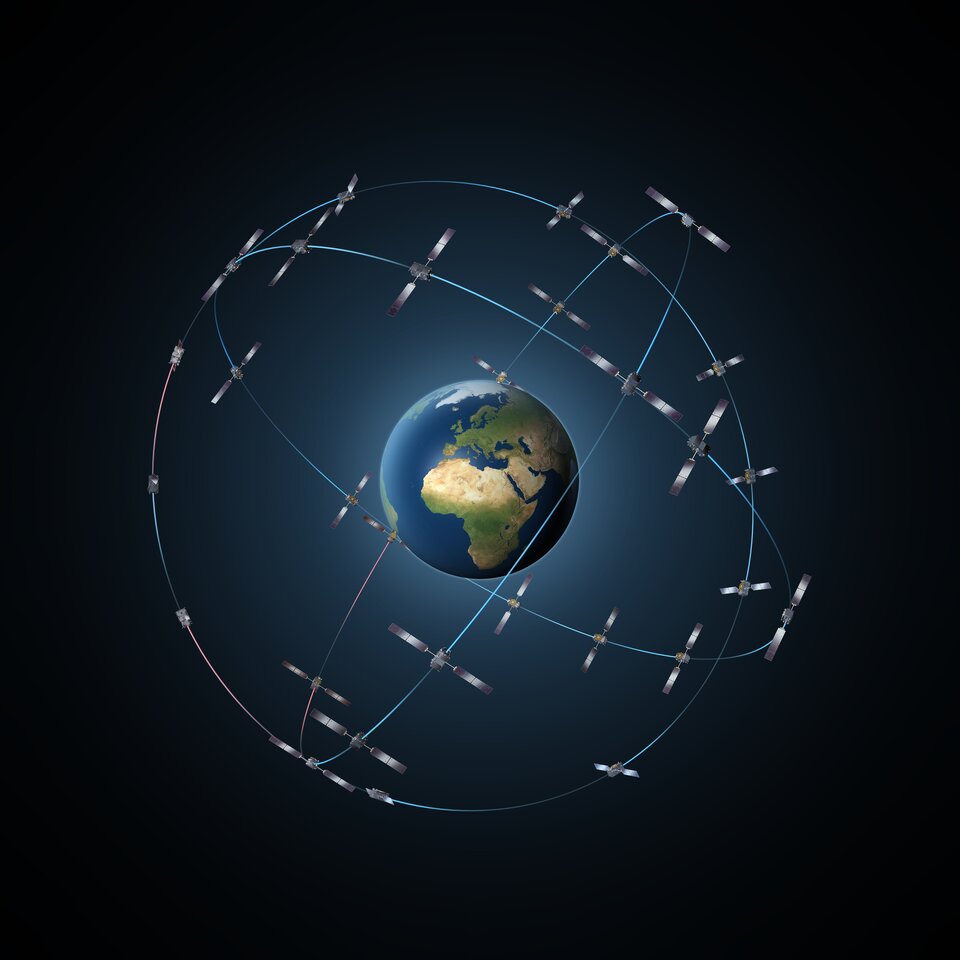Galileo Control Segment upgrade ready for next launch
A significant first for next month’s 11th Galileo launch: thanks to an upgrade of the world-spanning Galileo Control Segment, this will be the first launch where the satellites ‘ first steps into space will be overseen from an existing Galileo Control Centre, rather than requiring an external mission control site.
For all Galileo launches up until this one, the satellites’ post-liftoff ‘Launch and Early Operations Phase’ (LEOP) have been overseen from either ESA’s ESOC control centre in Darmstadt, Germany, or French space agency CNES’s site in Toulouse, France.

This is no longer the case thanks to the update of the Galileo Control Segment to Version 3.0. Encompassing the two Galileo Control Centres in Oberpfaffenhofen in Germany and Fucino in Italy, as well as six Telemetry, Tracking and Control (TT&C) ground stations used to monitor and command the 26 Galileo satellites currently in orbit, the hugely demanding upgrade was performed by an industrial consortium led by GMV in Spain.
As well as increasing overall reliability and cybersecurity, this new upgrade also opens the way to significant expansion of the Galileo constellation, which at 26 satellites already equals Europe’s largest satellite constellation. This updated Galileo Control Segment (GCS) is designed to enable oversight of up to 38 satellites, harnessing state-of-the-art technology using the latest solutions on the market.

Over the last three years a complete technological refresh of the GCS software and hardware, including the porting of software modules corresponding to several million lines of code, the deployment of equipment at many Galileo sites and the execution of a rigorous level of testing throughout all elements comprising the system.
Commencing in mid-2018, the upgrade had to contend with the worldwide COVID-19 pandemic midway through its lifetime, but the team pushed on to finally conclude at the end of July. Since the 4 August 2021 it has been used to nominally operate all the satellites in the constellation.

The project was overseen by ESA in its System Prime role managing Galileo’s design, development, qualification and deployment of future upgrades on behalf of the European Union, Galileo’s owner.
Galileo’s worldwide ground segment has been described as the most complex system ever developed by ESA. It is operated by the Spaceopal company – a joint undertaking between Italian company Telespazio and German firm Gesellschaft für Raumfahrtanwendungen mbH, set up especially for this purpose – under contract to EUSPA, the EU Agency for the Space Programme. The ground segment is divided into two segments: the Galileo Mission Segment, which oversees the functioning of the satellites’ navigation payloads including the generation of their signal messages, and the GCS which oversees the functioning of the satellites themselves.

The purpose of the GCS is to monitor and control the satellites in the Galileo constellation employing the Galileo TT&C stations spread around the world. In order to do this, telemetry is gathered and analyzed to monitor satellites’ overall health as well as to identify and correct, via telecommands uplinked to the satellites, any orbital drift that might degrade Galileo accuracy or any other contingency detected on-board.
“The original Galileo Control Segment design was initiated in the early 2000s and has consistently evolved to cope with the rate of Galileo launches but it was the time for a complete refresh,” explains Pedro Rodríguez de Andrés, GCS System Engineer.

“So part of the purpose of this upgrade was to deal with obsolescence, eliminate anomalies and enhance overall reliability through introducing state-of-the-art technologies that would also pave the way to future expansions. The upgrade also adds significantly to the system’s cybersecurity and security monitoring, making the satellites more secure than ever.”
“The deployment of the Galileo Control Segment v 3.0 is completed and now it is possible to perform all satellite activities, including LEOP, entirely from Galileo ground segment infrastructure.”
For next month’s launch of Galileo satellites 27-28, their LEOP will be overseen from Galileo’s Control Centre in Oberpfaffenhofen.

About Galileo
Galileo is currently the world’s most precise satellite navigation system, serving more than two billion users around the globe.
The Full Operational Capability phase of the Galileo programme is managed and funded by the European Union. The European Commission, ESA and EUSPA (the EU Agency for the Space Programme) have signed an agreement by which ESA acts as design authority and system development prime on behalf of the Commission and EUSPA as the exploitation and operation manager of Galileo/EGNOS. “Galileo” is registered as a trademark in the database of the European Union Intellectual Property Office (n° 002742237).















 Germany
Germany
 Austria
Austria
 Belgium
Belgium
 Denmark
Denmark
 Spain
Spain
 Estonia
Estonia
 Finland
Finland
 France
France
 Greece
Greece
 Hungary
Hungary
 Ireland
Ireland
 Italy
Italy
 Luxembourg
Luxembourg
 Norway
Norway
 The Netherlands
The Netherlands
 Poland
Poland
 Portugal
Portugal
 Czechia
Czechia
 Romania
Romania
 United Kingdom
United Kingdom
 Slovenia
Slovenia
 Sweden
Sweden
 Switzerland
Switzerland


























